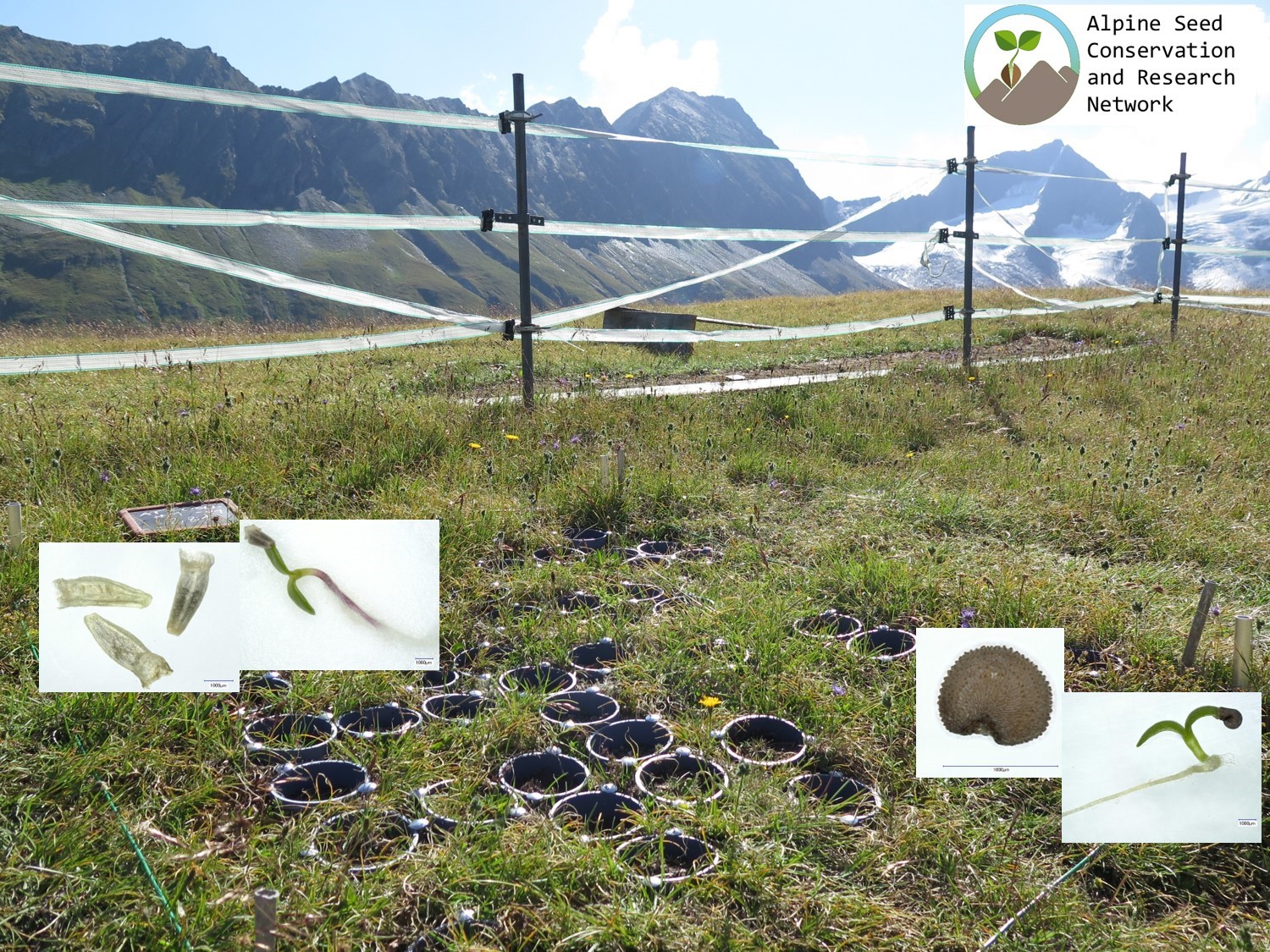Vera Margreiter (Innsbruck): Species living in mountain regions are exposed to threats such as land use change and climate change, which makes the protection of the alpine flora necessary. Two different strate-gies can be followed to conserve biodiversity: Ex-situ and In-situ conservation. The ‘Alpine Seed Conservation and Research Network’ is one of the few programmes specifically target-ing ex-situ conservation of alpine plant species. Conservation in seed banks involves not on-ly the handling of plant seeds but also the experimental determination of germination. The first part of this presentation offers insights into seed bank operations and evaluates the pros and cons of standard protocols for testing germination of Alpine species.
The life cycle of plants has several transitional stages, all of which have their bottlenecks. However, the early stages (e.g. germination, emergence, recruitment) are certainly the most sensitive. Abiotic factors and biotic interactions have a strong influence on these processes and thus on the transition to the next stages. Knowledge about recruitment is of great inter-est for biodiversity conservation at all organisational levels (i.e., individual to ecosystem). However, in the European Alps, only little data on the recruitment success of alpine species in-situ is available. Therefore, we conducted a seed-sowing experiment along an elevation gradient in the European Central Alps to investigate recruitment in relation to abiotic factors and biotic interactions. We found that germination strongly follows the temperature gradient along elevation, but that for recruitment other factors are crucial for success. The second part of the talk presents this study.
